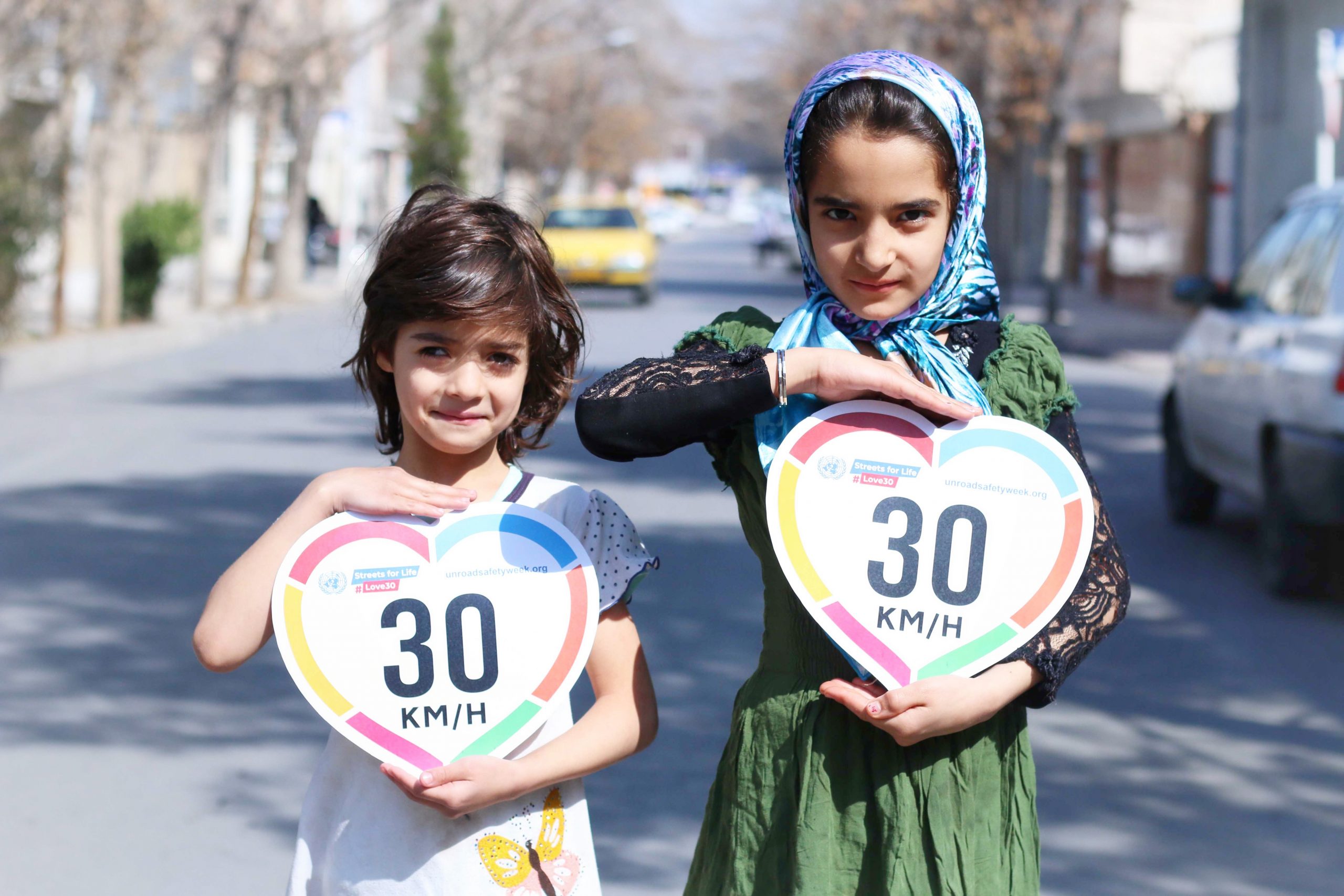
Kate Turner, FIA Foundation
Streets for life, the theme of this year’s UN Road Safety Week, focuses on policy advocacy for low-speed streets. Why ‘Streets for Life’? Because for children and youth across the world, 30km/h streets can be a literal life-saver. And they can also be the key that opens up our urban space for healthier, more equitable and climate-friendly living.
Road injury remains the leading cause of death for children and young people from the age of five to 29. On our roads each year, over 10.5 million children and young people are injured, 249,000 of them fatally. Pedestrians – making-up half of all child road deaths – are particularly vulnerable to speed. The laser-focused aim of our advocacy should be to prevent vehicles from travelling at speeds of more than 30km/h in places where unprotected children are present. This can be achieved through a combination of street design, vehicle technology and enforcement.
Children are especially vulnerable on our roads. Their smaller, more fragile frames and developing physiology make them particularly vulnerable to serious injuries, while also being more at risk of being involved in a collision because they are less able to judge vehicle speeds, have poorer impulse control, and are less visible to other road users due to their height.
Surviving a road crash does not always mean a return to normal life; at any one time, almost seven million children and young people are living with road injuries and it remains a leading cause of life-long disability. The impact of these injuries can be profound, such as missed schooling, lost opportunities, and long-term economic hardship for many.
It is little wonder that for parents, carers, and children alike, streets around the world are seen as spaces that must be passed through, not lived in. For many families, public spaces dominated by fast-moving traffic mean they fear their children’s exposure to the physical harms of road traffic injury, dirty air and noise pollution. Put simply, many streets do not serve the needs of everyone and, in particular, the needs of those who walk, cycle, or play. These spaces are important for adolescents too, often making their way without caregivers for the first time, relying heavily on travel by foot or bike to navigate around their community and socialise. In the past year, COVID-19 has brought the importance of public spaces into even sharper relief as young people’s limited opportunity for movement had significant impacts on their wider social participation, wellbeing, mental health, physical health and development.
The evidence that lower vehicle speeds protect children is compelling and universal. In Tanzania, for example, AMEND’s SARSAI programme introducing sidewalks, speed reductions and traffic-calmed crossings around schools cut road injuries by as much as 26% and has now expanded to 50 high-risk school areas. In Britain, the introduction of 20 mph residential zones saw child pedestrian injury reductions of 70% and child cyclist injury reductions of 48%.
So how do NGOs advocate for Streets for Life? Collaboration is key, bringing together evidence, expertise and political will. In Zambia, for example, 30km speed limits around schools and areas with high pedestrian flow have just come into law following a prolonged campaign by The Zambia Road Safety Trust. The achievement was the culmination of years of on-the-ground evidence building with organisations including Amend (supported by the FIA Foundation), and Vital Strategies and the Partnership for Healthy Cities (a collaboration including Bloomberg Philanthropies and the World Health Organization). Using this expertise, the Trust supported the Mayor of Lusaka to became a Road Safety Ambassador to advocate for safer streets to the national government, alongside targeted campaigning with local consultations, wider NGO engagement, and public-facing media campaign.
Low-speed streets can help us re-focus our public space to meet the needs of everyone. Streets where children and youth can move freely, independently and safely offer them a better quality of life now and a healthier, more equitable life in the future.
This UN Road Safety Week, support Streets for Life and share the #Love30 message for children and young people around the world.
Learn more about how to get involved in the UNGRSW Streets for Life campaign here: www.unroadsafetyweek.org
Image: Ali Zayerzadeh